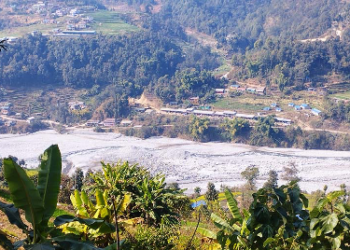OPINION
Recently, the Parliament approved the government’s proposal to borrow over US$190 million from Stanbic Bank Uganda for the Umeme Limited buyout despite concerns raised by legislators on the Committee of National Economy.
The loan was approved without the Auditor General’s report that would establish the exact UMEME buyout amount. Of course, this may create inconsistencies of the estimated buyout amount. For instance, while the Electricity Regulatory Authority (ERA) estimated a cost of US$127.6 million, the government sought US$190.9 million.
But that’s not the point, lets focus on the end of the Umeme Ltd electricity distribution concession, the refusal by the government to renew it and the decision to have a state company take over the power distribution. Ugandans have had mixed reactions on UMEME’s exit most of them expecting reduced power tariffs from what they have been paying.
But Ugandans should understand that UMEME’s time in Uganda, its exit, entry of UEDCL and others are just symptoms of a huge problem in the electricity sector.
And am not hyping UMEME that it has done the best job for Ugandans. Actually, if there is any deal that has been negotiated badly against Ugandans, it is a concession between Umeme and Uganda government to manage power distribution. Unfair clauses in the contract became a thorn in the lives of many Ugandans and the power utility company has profited the country’s electricity through Ugandans paying exorbitant power tariffs.
In Gen. Salim Saleh’s report of 2009, UMEME was faulted for not honoring its commitment to reduce the high cost of electricity in Uganda.
The report showed a number of irregularities in setting the power tariffs, faulted the biding process leading to the award and the signing of concession agreement with UMEME and ESKOM. The report also indicated that UMEME fraudulently inflated losses in distributing power, forcing the government to compensate the power distribution company of over UGX 452 billion between 2005 and 2009.
In the same vein, in March 2018, President Museveni wrote a letter accusing some ministry of energy officials for inflating the magnitude of the technical and commercial loses incurred by Umeme so as to keep tariff rates high. In his letter, the President said that although commercial losses shrunk to 1% and Umeme claiming to have invested $500m in the distribution infrastructure, the power tariffs had remained high.
But let us be realistic, it’s not UMEME alone responsible for the tears of electricity consumers, government decisions have partly contributed to the suffering of power consumers. For instance, there have been issues in the processes of awarding contracts awarding processes of power dams. Details emerged about the controversial awarding of contracts for Isimba dam and Karuma dam respectively which has resulted into shoddy works and delayed projects’ commission.
The 2015 Auditor General’s (AG) report indicated that both Engineering, Procurement and Construction (EPC) contracts of the over $2.2 trillion Karuma and Isimba hydropower dams’ projects were directly procured contrary to provisions of the PPDA Act, 2003 which require international bidding for such contracts. The report also indicated that there was no evidence that the Chines firms had the technical capacity to construct the power dams. This explains the shoddy work done by the energy contractors yet such projects are constructed from borrowed money.
The Karuma dam was also constructed for nearly over ten years against the agreed five-year period which costed Ugandans UGX 113.93 billion on delayed payments from initial cost of UGX 6.32 trillion to UGX 8.18 trillion due to implementation challenges. Such decisions by the government have led to the accumulation of loans which have become a moving target to the few Ugandans that are connected to the grid. This money has to be recovered through the end user tariffs.
More so, the government has been signing electricity Power Purchase Agreements (PPAs) that allows the investor to be paid for the electricity regardless of whether it is evacuated on the grid or not. This has costed Ugandans to pay huge amounted of money for the available power that has been generated but not consumed (deemed power). According to the Auditor General’s report 2024, only 19% of the population had access to grid electricity while 37% use off-grid power. Notably, out of the current total generation capacity of 2,005mw, the peak demand is only 1,025.69mw implying a surplus of 979.31mw.
In 2021, the government paid about US $24 million (UGX 90.81 billion) annually for deemed power since 2019. In December 2023, Parliament also approved a UGX 318 billion supplementary budget for the Electricity Access Scale-Up Project (EASP). Of this, UGX 128 billion was to connect 200,000 households, and UGX 58 billion to cover shortfalls in contractual obligations for deemed energy, specifically for the Lira-Agago transmission line to Achwa-Agago dam.
Although government announced that it ended paying for deemed power, Ugandans are asking who is responsible for paying the excess electricity? Where is the market for the surplus power? Why are Ugandans not accessing cheap power despite the connection of 600mw Karuma power to the grid?
Other challenges including corruption where every year the country loses over UGX 3 trillion, projects such as Bujagali, Isimba, Owen Falls, Kiira and others cannot even provide electricity that is affordable by the majority citizens. For instance, since 2015, the government has been providing tax exemptions for the 250mw Bujagali dam to ensure that Ugandans get cheap electricity at USD 5 cents per kilowatt from the over USD11 cents. But to make it worse, the tax exemptions have failed to reduce the electricity tariffs to USD5 cents per kilowatt. Instead, available information indicates that as a result of tax exemptions, Ugandans have lost over UGX388 billion. Such losses cannot support Ugandans to access cheap power.
Therefore, Uganda’s electricity sector problems are huge and the likes of UMEME have just been tools for people in power to steal from Ugandans. The bad electricity sector governance characterized by political manipulation, corruption, failed institutions, impunity and others are in the right position to explain our electricity sector dilemma.
By Patrick Edema,
The writer is a Ugandan Environmental Engineer







































